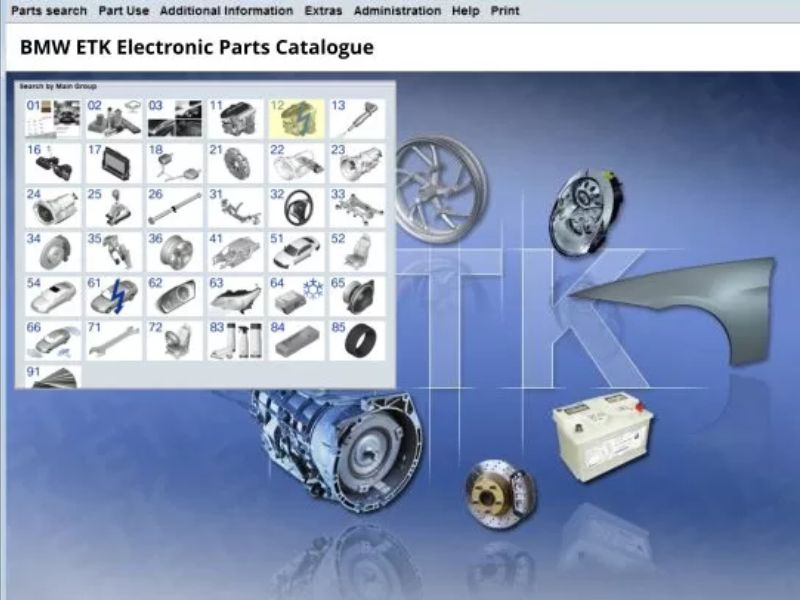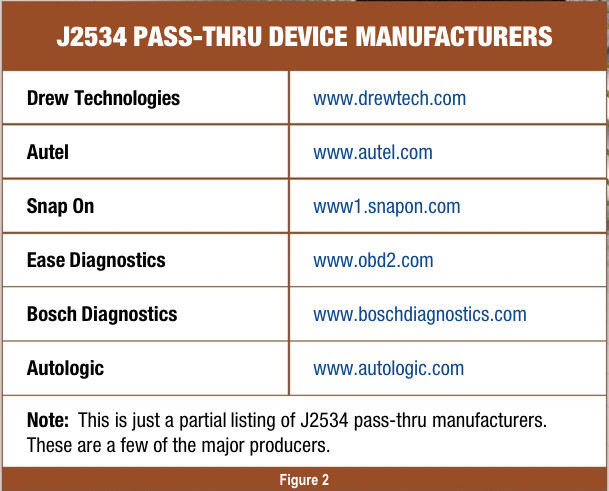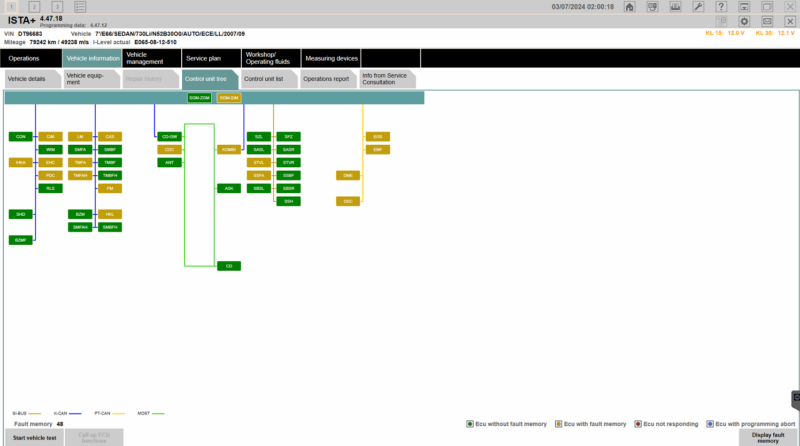How to Fix Code DTC P0105 on Audi: Your Expert Guide

How to Fix Code DTC P0105 on Audi: Your Expert Guide
Encountering the P0105 diagnostic trouble code on your Audi can be a bit concerning, but don’t worry, CARDIAGTECH.NET is here to provide you with a comprehensive and easy-to-follow guide to resolve this issue and get your vehicle running smoothly again. This guide will walk you through the causes, symptoms, diagnosis, and repair steps, empowering you with the knowledge to tackle this challenge effectively.
1. Understanding the Audi P0105 Trouble Code
The P0105 diagnostic trouble code signifies a problem within the Manifold Absolute Pressure (MAP) or Barometric Pressure (BARO) sensor circuit on your Audi. This sensor plays a vital role in your engine’s performance by providing crucial information to the Engine Control Unit (ECU) about the air pressure in the intake manifold. The ECU uses this data to calculate the correct amount of fuel to inject for optimal combustion. When the ECU detects an issue with the signal from this sensor or its circuit, it triggers the P0105 code and illuminates the check engine light. Understanding this fundamental aspect is the first step towards a successful resolution.
2. Common Causes of the P0105 Code in Audi Vehicles
Several factors can lead to the dreaded P0105 code appearing on your Audi’s dashboard. Pinpointing the exact cause is essential for an effective repair. Here are some of the most frequent culprits:
- Faulty MAP Sensor: The sensor itself might be defective due to age, wear and tear, or internal failure. This is often the primary suspect when dealing with sensor-related codes.
- Wiring Issues: Problems within the wiring harness connected to the MAP sensor can disrupt the signal transmission. This includes:
- Damaged Wires: Frays, cuts, or breaks in the wires can lead to open circuits or short circuits.
- Loose or Corroded Connectors: Poor connections at the sensor or ECU can impede proper signal flow. Corrosion can build up over time, especially in areas exposed to moisture and road salt.
- Vacuum Leaks: A vacuum leak in the intake manifold or the vacuum lines connected to the MAP sensor can cause inaccurate pressure readings. These leaks can introduce unmetered air into the engine, affecting the sensor’s ability to provide correct data.
- ECU Malfunction: While less common, a fault within the Engine Control Unit (ECU) itself can sometimes lead to incorrect interpretation of the sensor signal or issues within the sensor’s circuit.
- Intake Manifold Problems: Cracks or damage to the intake manifold can also affect the pressure readings sensed by the MAP sensor.
- Barometric Pressure Sensor Issues: In some Audi models, the P0105 code might relate to the barometric pressure sensor, which measures atmospheric pressure and helps the ECU adjust for altitude. A malfunction in this sensor or its circuit can also trigger the code.
3. Recognizing the Symptoms of an Audi with a P0105 Code
Identifying the symptoms associated with the P0105 code can provide valuable clues during the diagnosis process. Being aware of these signs will help you understand the impact of the issue on your Audi’s performance:

- Illuminated Check Engine Light: This is the most obvious indicator that the ECU has detected a problem and stored a diagnostic trouble code.
- Poor Engine Performance: You might experience a noticeable decrease in power and acceleration. The engine may feel sluggish or unresponsive.
- Rough Idling: The engine might idle erratically, with fluctuations in RPM or a generally unstable idle.
- Hesitation or Stalling: The engine could hesitate during acceleration or even stall, especially at lower speeds or when coming to a stop.
- Reduced Fuel Efficiency: Incorrect fuel calculations due to faulty sensor readings can lead to increased fuel consumption.
- Difficulty Starting: In some cases, a faulty MAP sensor can make it harder to start the engine.
- Engine Knocking or Misfiring: While less common, inaccurate fuel delivery can sometimes result in engine knocking or misfiring.
4. Step-by-Step Guide to Diagnosing the P0105 Code on Your Audi
Diagnosing the P0105 code requires a systematic approach. Here’s a detailed step-by-step guide that automotive technicians and DIY enthusiasts can follow:
Step 1: Initial Scan and Code Verification
- Use an OBD-II scan tool to read the diagnostic trouble codes stored in the ECU. Note down all the codes present, not just P0105. This can provide a broader picture of any underlying issues.
- Clear the codes and take the vehicle for a short test drive to see if the P0105 code reappears. This confirms if the issue is intermittent or persistent.
Step 2: Visual Inspection
- Carefully inspect the MAP sensor and its surrounding area. Look for any obvious signs of damage, such as cracks, breaks, or loose connections.
- Examine the wiring harness and connectors leading to the MAP sensor. Check for frayed or damaged wires, loose pins in the connectors, and signs of corrosion.
- Inspect the vacuum lines connected to the intake manifold and the MAP sensor. Look for any cracks, leaks, or disconnections. You can often hear a hissing sound indicating a vacuum leak.
Step 3: MAP Sensor Testing
- Voltage Test (Reference Voltage): With the ignition key in the “ON” position and the engine off, use a multimeter to check for the presence of a 5-volt reference voltage at the MAP sensor connector. Consult your Audi’s repair manual for the specific pinout of the sensor connector. A missing reference voltage indicates a problem with the ECU or the wiring.
- Ground Test: Verify that there is a good ground connection at the MAP sensor connector using the multimeter.
- Signal Voltage Test: With the engine running and the multimeter connected to the signal wire of the MAP sensor, observe the voltage reading at idle. The voltage should typically be in the range of 1.0 to 1.5 volts, but this can vary depending on the specific Audi model and engine. As you gently increase the engine RPM or apply vacuum to the sensor (if accessible), the signal voltage should increase. A flat or erratic signal indicates a faulty sensor.
- Frequency Test (Some Models): Some Audi models utilize a frequency-based MAP sensor signal. In this case, you would use a multimeter with a frequency measurement function to check the sensor’s output. Again, refer to the repair manual for the expected frequency range.
Step 4: Checking for Vacuum Leaks
- Visual Inspection: Carefully examine all vacuum hoses connected to the intake manifold, brake booster, and other components. Look for cracks, looseness, or signs of wear.
- Listening Test: With the engine running, listen for any hissing sounds that might indicate a vacuum leak.
- Spray Test: Carefully spray small amounts of carburetor cleaner or brake cleaner around vacuum hoses and intake manifold gaskets. If the engine RPM changes when you spray a particular area, it indicates a vacuum leak. Be cautious when using flammable sprays around a hot engine.
- Smoke Test: A professional smoke test machine can be used to introduce a non-toxic smoke into the intake system. Any leaks will be readily visible as smoke escaping.
Step 5: Checking the Barometric Pressure Sensor (If Applicable)
- If your Audi model has a separate barometric pressure sensor, locate it (usually near the ECU or within the intake system).
- Use a scan tool to read the barometric pressure reading. This should roughly correspond to the current atmospheric pressure in your location. Significant deviations indicate a potential issue with the sensor or its circuit.
- Perform voltage and ground tests on the barometric pressure sensor connector, similar to the MAP sensor tests.
Step 6: ECU Diagnostics (Last Resort)
- If all other components and wiring appear to be in good working order, the issue might lie with the ECU. However, ECU failures related to the MAP sensor circuit are relatively rare.
- ECU diagnosis often requires specialized tools and expertise. It’s advisable to consult a qualified automotive technician if you suspect an ECU problem.
5. Parts Needed to Fix the P0105 Code on an Audi
Based on the diagnosis, the following parts might be required to resolve the P0105 code:
- New MAP Sensor: If the sensor itself is found to be faulty, a direct replacement is necessary. Ensure you purchase a high-quality sensor that is compatible with your specific Audi model and engine. Consider reputable brands for reliable performance.
- Wiring Harness Repair Components: If damaged wires or connectors are identified, you might need:
- New wire sections of the appropriate gauge.
- Wire connectors (butt connectors, solder, etc.).
- Electrical tape or heat shrink tubing for insulation.
- New connector housings or pins if the existing ones are damaged or corroded.
- Vacuum Hoses: If vacuum leaks are found, replace the cracked or damaged hoses with new ones of the correct size and type.
- Intake Manifold Gasket: If a leak is detected at the intake manifold gasket, a new gasket will be required.
- Barometric Pressure Sensor: If the barometric pressure sensor is faulty, it will need to be replaced.
At CARDIAGTECH.NET, we understand the importance of having access to high-quality diagnostic tools and repair components. We offer a wide range of OBD-II scan tools, multimeters, and other essential equipment that can assist you in accurately diagnosing and resolving issues like the P0105 code on your Audi. Investing in reliable tools from CARDIAGTECH.NET empowers you to work efficiently and effectively, saving time and ensuring accurate repairs.
6. Estimated Repair Cost for Audi P0105
The cost to fix the P0105 code on your Audi can vary depending on several factors, including:
- The Underlying Cause: A simple fix like replacing a vacuum hose will be significantly less expensive than replacing a faulty MAP sensor or, in rare cases, the ECU.
- The Cost of Parts: The price of a new MAP sensor can range from $50 to $200 or more, depending on the brand and your Audi model. Other parts like vacuum hoses and wiring repair components are generally less expensive.
- Labor Costs (If Using a Mechanic): If you choose to have a professional mechanic diagnose and repair the issue, labor costs will be a significant factor. Labor rates vary depending on your geographical location and the specific repair shop. Diagnosis can range from $75 to $150, and the labor for replacing a MAP sensor typically ranges from $50 to $150. More complex repairs like fixing extensive wiring issues or replacing the ECU will incur higher labor charges.
Here’s a rough estimate of potential repair costs:
| Repair Type | Estimated Part Cost | Estimated Labor Cost | Total Estimated Cost |
|---|---|---|---|
| Replace Faulty MAP Sensor | $50 – $200 | $50 – $150 | $100 – $350 |
| Repair Vacuum Leak | $10 – $50 | $50 – $100 | $60 – $150 |
| Wiring Repair | $20 – $100 | $100 – $300 | $120 – $400 |
| Replace Baro Sensor | $40 – $150 | $50 – $100 | $90 – $250 |
| ECU Replacement (Rare) | $800 – $2000+ | $100 – $300+ | $900 – $2300+ |
Note: These are just estimates, and the actual cost may vary. It’s always a good idea to get a quote from a reputable mechanic before proceeding with any repairs.
7. Tools Recommended for Diagnosing and Fixing P0105
Having the right tools can make the diagnosis and repair process much smoother and more efficient. CARDIAGTECH.NET offers a comprehensive selection of professional-grade automotive tools tailored to the needs of both experienced technicians and DIY enthusiasts:
- OBD-II Scan Tool: Essential for reading and clearing diagnostic trouble codes. Look for a scan tool that provides live data streaming, which can be invaluable for monitoring MAP sensor readings and other engine parameters in real-time. Models with enhanced diagnostic capabilities for Audi vehicles are particularly beneficial.
- Digital Multimeter: A versatile tool for testing voltage, resistance, and continuity in electrical circuits. Crucial for verifying reference voltage, ground connections, and the MAP sensor’s signal output.
- Vacuum Gauge: Used to measure the vacuum in the intake manifold, helping to identify vacuum leaks.
- Vacuum Pump: Can be used to apply vacuum to the MAP sensor to test its response.
- Wire Strippers and Crimpers: Necessary for repairing damaged wiring.
- Assorted Hand Tools: Wrenches, sockets, screwdrivers, and pliers are essential for accessing and removing components.
- Repair Manual for Your Audi Model: Provides specific information about your vehicle’s wiring diagrams, component locations, and testing procedures.
- Smoke Machine (Optional but Recommended for Thorough Vacuum Leak Testing): A highly effective tool for pinpointing even small vacuum leaks.
Investing in quality tools from CARDIAGTECH.NET not only improves your diagnostic accuracy but also enhances your overall work efficiency. Our tools are designed for durability and reliability, ensuring they can withstand the demands of regular use in a professional or DIY setting.
8. Safety Precautions During Diagnosis and Repair
Working on your vehicle involves inherent risks. Always prioritize safety by following these precautions:
- Disconnect the Battery: Before working on any electrical components, disconnect the negative battery terminal to prevent accidental short circuits.
- Wear Safety Glasses: Protect your eyes from debris and chemicals.
- Work in a Well-Ventilated Area: Avoid breathing in harmful fumes.
- Use Caution with Flammable Liquids: When using sprays to check for vacuum leaks, be mindful of hot engine components.
- Refer to Your Vehicle’s Repair Manual: Follow the recommended procedures and safety guidelines specific to your Audi model.
- If You’re Unsure, Seek Professional Help: If you are not comfortable performing any of the diagnostic or repair steps, it’s best to consult a qualified automotive technician.
9. Why Choose CARDIAGTECH.NET for Your Automotive Tool Needs?
At CARDIAGTECH.NET, we are committed to providing automotive professionals and enthusiasts with top-quality diagnostic tools and equipment. Here are just some of the advantages of choosing us as your trusted supplier:
- Wide Selection of Products: We offer a comprehensive range of OBD-II scan tools, diagnostic software, specialty tools, and repair equipment to meet all your automotive needs.
- High-Quality and Reliable Brands: We partner with leading manufacturers to ensure that our products are durable, accurate, and perform to the highest standards.
- Competitive Prices: We strive to offer our products at competitive prices, providing excellent value for your investment.
- Expert Customer Support: Our knowledgeable team is available to answer your questions and provide technical assistance, helping you choose the right tools for your specific requirements.
- Convenient Online Shopping: Our user-friendly website makes it easy to browse our extensive catalog and place orders from the comfort of your home or workshop.
- Fast and Reliable Shipping: We understand the importance of getting your tools quickly, so we offer efficient shipping options.
10. Maintaining Your Audi to Prevent Future Issues
Preventing future diagnostic trouble codes and maintaining the optimal performance of your Audi involves regular maintenance and attention to detail:
- Follow the Recommended Maintenance Schedule: Adhere to the service intervals outlined in your Audi’s owner’s manual. This includes regular oil changes, filter replacements, and other essential maintenance tasks.
- Inspect Vacuum Hoses Regularly: Periodically check the condition of vacuum hoses for any signs of cracks, leaks, or wear. Replace them as needed.
- Ensure Proper Air Filter Maintenance: A clean air filter allows for proper airflow to the engine, which can impact MAP sensor readings.
- Address Any Performance Issues Promptly: If you notice any symptoms like rough idling, poor acceleration, or reduced fuel economy, have them checked by a qualified mechanic as soon as possible. Early detection can prevent minor issues from escalating into more significant problems.
- Use High-Quality Parts: When replacing any components on your Audi, opt for high-quality parts from reputable manufacturers to ensure reliability and longevity.
By following these maintenance tips and addressing any issues promptly, you can help prevent future occurrences of the P0105 code and keep your Audi running smoothly for years to come.
Have you encountered the frustrating P0105 code on your beloved Audi? Are you looking for reliable diagnostic tools to pinpoint the problem and high-quality repair components to get your vehicle back on the road with optimal performance? At CARDIAGTECH.NET, we understand the unique challenges faced by automotive technicians and garage owners like you. You need tools that not only work accurately but also stand up to the rigors of daily use, all while providing excellent value.
Imagine having a state-of-the-art OBD-II scan tool from CARDIAGTECH.NET at your fingertips, effortlessly revealing the root cause of that pesky check engine light. Picture yourself quickly and confidently testing the MAP sensor with a precise multimeter from our extensive collection. Think about the time you’ll save and the accuracy you’ll gain by using professional-grade equipment designed to make your job easier and more efficient.
We know that your work demands physical strength, constant interaction with grease and chemicals, and the relentless pressure to stay updated with the latest automotive technologies. You’re looking for solutions that improve your work efficiency, reduce repair times, and ultimately increase your garage’s profitability and reputation. CARDIAGTECH.NET is your partner in achieving these goals.
Don’t let the P0105 code keep your Audi out of commission or slow down your repair shop’s productivity. Contact CARDIAGTECH.NET today to explore our wide range of automotive diagnostic tools and equipment. Our expert team is ready to provide you with personalized advice and help you choose the perfect tools to meet your specific needs and budget.
Improve your work efficiency, reduce repair time, and increase customer satisfaction. Click the Whatsapp contact button now to consult with our experts and order your high-quality car repair support tools from CARDIAGTECH.NET.
Contact Information:
Address: 276 Reock St, City of Orange, NJ 07050, United States
Whatsapp: +1 (641) 206-8880
Website: CARDIAGTECH.NET










![How to Fix U0302 Error on VW Jetta 2015 [Software Incompatibility with Transmission Control Module Warning]](https://cardiagtech.my/wp-content/uploads/2024/12/how-to-fix-u0302-error-on-vw-jetta-2015.jpg)